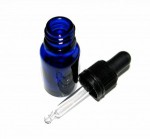This post may contain affiliate links. If you make a purchase, I may earn a commission. As an Amazon Associate, I may earn from qualifying purchases.
Essential oils have been used for hundreds of years. Stories have been passed down that suggest their effectiveness in preventing disease. Perfumers who worked with essential oils were noted for being resistant to illness, and grave robbers during the bubonic plague used aromatics to prevent getting sick while handling infected bodies. Since the late 1800’s, researchers have investigated the antiseptic qualities of essential oils and have confirmed what our ancestors already knew–that plant oils have antibacterial and antiviral properties.
Two important distinctions to make between essential oils and conventional medicine such as antibiotics are that:
- Bacteria are far less able to develop resistance to essential oils, and
- Essential oils are effective against viruses (colds and flu are both viral). Antibiotics are only successful against bacterial infections.
But, before we get too excited, essential oils are not medicine. As Marcel Lavabre put it, essential oils do not do the body’s job, but rather help the body do its job. Aromatherapy can be a complementary therapy in achieving and maintaining a healthy body. This article will focus on three ways that essential oils can help with disease prevention:
- Support the immune system
- Cleaning the air and surfaces of microbes
- Supporting the body during illness
How essential oils work in disease prevention is best understood if we take a moment to review the disease process. Diseases are generally caused by either bacteria or viruses. Bacterial diseases (e.g. pneumonia) can be treated with antibiotics, while viral diseases such as colds and flu do not respond to antibiotics (though in certain cases, antivirals can be prescribed). To become ill you need two things:
- A susceptible host (that’s us!)
- Exposure to an infectious dose of the pathogen (disease causing organism)
To prevent disease then, we should:
- Reduce the susceptibility of the host by striving for good health with a healthy diet and regular exercise
- Reduce contact with germs through thorough hand washing; not touching your eyes, nose, or mouth; and reducing airborne and surface germs in our environment
Using essential oils to support the immune system
For everyday use, oils with good safety profiles should be used to help build our bodies defenses. A number of oils are said to be immunostimulant and they include:
Bois de rose (Brazilian rosewood), bergamot, petitgrain, palmarosa, chamomile, sweet orange, lemon, tea tree, niaouli, pine, lavender, vetiver, geranium, rose, neroli, and frankincense
Cleaning the air and surfaces of microbes
Studies have found that diffusing essential oils can reduce both airborne and surface micro-organisms. Lowering our exposure to pathogens will reduce our odds of getting sick. Again, since this is something we will want to do on a regular basis we should stick to oils with good safety profiles. All essential oils have some antiseptic qualities, but oils that are frequently noted as being good as an aerial antiseptic include:
Lavender, tea tree, niaouli, eucalyptus radiata, cypress, bergamot, lemon, pine, grapefruit, lime, ravensara, lemon tea tree, lemongrass, eucalyptus citriodora, geranium, fir, pine, spruce, chamomile, coriander, bois de rose, petitgrain, neroli, clary sage, rose, and palmarosa.
You will note that there is a lot of duplication on these first two lists, therefore we can easily choose oils that will both support our immune system and clear the air.
And if you do get sick?
The most effective oils against microbes also happen to be the ones that carry the greatest cautions for human use. Any oils high in phenols or ketones should be avoided for long term use as that could lead to liver toxicity. Oils that should only be used for short periods (less than 2 weeks at a time) include:
Basil, cinnamon leaf, clove bud, eucalyptus globulus, fennel, hyssop, juniper, black pepper, sage, spike lavender, oregano, thyme, and rosemary.
As you can see from this list, most of the oils in the oil of the thieves blend are on this list. That blend, however, would be appropriate during times when illness is in the house. You can also check out which oils are best to use with colds or flus.
Why use a diffuser?
Diffusion is an easy and effective way to use essential oils. No need to massage everybody in the house, just drop some oils in and turn it on. For some of the more potent oils which are also often skin irritants, diffusion is a safer way to use these oils.
In a study on the antibacterial activity of vaporized essential oils against respiratory tract pathogens, researchers concluded that high vapor concentrations for a short period of time were more effective than overnight use. What this means is that using a nebulizing diffuser 2-3 times a day for 10-15 minutes may be better than continuous mild diffusion by an ultrasonic device. Finally, studies have found that vaporized essential oils can be effective at reducing both airborne and surface micro-organisms.
Conclusion
Diffusing essential oils can be a complementary therapy for maintaining good health. Safer oils should be chosen for everyday use that will support the immune system and clean your home or office environment. If you become ill, several essential oils have powerful antibacterial and antiviral properties and may assist your body in fighting disease.


